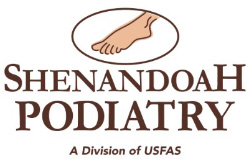Turf toe is a common injury that can happen to anyone, but it typically affects athletes who play sports on artificial turf. Football players, sprinters, rugby players, gymnasts, and ballet dancers often suffer turf toe injuries. It is important to see a skilled Virginia podiatrist as soon as you notice symptoms. Early treatment can alleviate symptoms and help prevent further problems down the road. 
Understanding Turf Toe
There are two joints in the big toe. The smaller joint is in the middle, just behind the base of the toenail. The larger joint connects the base of the big toe to the rest of the foot. This is called the metatarsophalangeal (MTP) joint. When you have turf toe, this joint is sprained.
A turf toe injury can occur when the MTP joint is bent up into a hyperextended state—when it is bent beyond its normal range of motion. This can happen, for example, when a runner pushes off in a sprint and forces the toe into the ground. As a result, the ligaments, tendons, and other soft tissues at the MTP joint can stretch, sprain, or tear.
Turf toe injuries increased with the introduction of artificial turf for football fields in the 1970s. Along with movement toward softer, lighter shoes, this may have contributed to more athletes suffering turf toe injuries in recent years. Athletes who participate in sports that involve sudden movements are prone to turf toe.
Common Symptoms of Turf Toe
Like some other sports injuries, turf toe can be a painful injury that happens suddenly. For instance, wide receivers and track sprinters often suffer turf toe, as their sports require quick, sudden movements. Turf toe can also be an injury that develops over time from repetitive motion. Symptoms of turf toe can range from mild to severe, and they can worsen over time. Signs may include pain, swelling, and reduced mobility.
Signs You May Have Turf Toe
- Pain and tenderness. You may have intermittent or constant pain with turf toe. It can increase in intensity if you press on the toe joint, and you may also have difficulty putting weight on your big toe.
- Swelling and bruising. As with many other types of injuries, the body reacts to turf toe with inflammation. The area around the big toe and the MTP joint can swell. Bruising can occur from the toe joint to the top of the foot and make it painful to put on shoes or walk comfortably.
- Reduced mobility and range of motion. The ligaments, tendons, and other soft connective tissues are responsible for giving the MTP joint its full range of motion. When they are sprained or torn, they are no longer able to perform this function effectively. As a result, it may feel that your big toe joint can’t move the way it normally does. You may not be able to bend your toe, and you may not be able to push off the ground.
- A loose or unstable joint. A telltale sign that you may have turf toe is if you hear or feel a “pop” during a sudden trauma to the big toe. This may be the MTP joint popping out of place. Your toe may also feel unstable or unusually stiff. A dislocated joint needs to be put back in place to allow for proper healing and recovery.
See a Roanoke Podiatrist for Turf Toe Treatment Right Away
Just like with other problems affecting the foot and ankle, such as Achilles tendon injuries, it is crucial to see a professional at the first signs of turf toe. An experienced Roanoke turf toe podiatrist can properly diagnose the condition and explain your turf toe treatment options.
In some cases, treating turf toe can be simple. You may only need rest, ice, and over-the-counter pain relief. Other cases may benefit from taping or compression bandages. In very severe cases, you may need surgery. Our skilled podiatrists can work with you to develop a custom treatment plan catered to your needs. As treatment continues, they can offer advice on how to reduce the risk of future injury. For example, they can explain how to choose the right sports cleats for your feet. The right shoes can make a world of difference. Custom orthotics are another option to consider.

